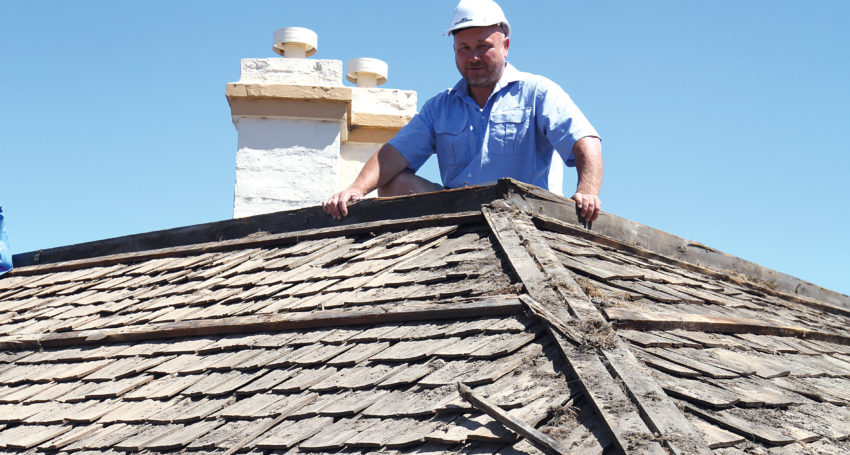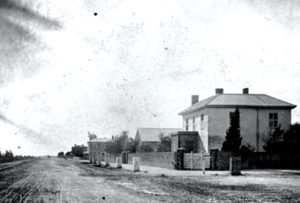Piece of local history revealed
Local
Timber shingles laid 177 years ago have been uncovered during repair work on the roof of the heritage-listed Archbishop’s House on the corner of Grote Street and West Terrace.

James Henry Roofing Company, which specialises in heritage conservation, came across the timber shingles when repairing the roof.
Proprietor James Henry said it was very exciting to find them still there.
“I’ve worked on Ayers House, Government House and both cathedrals but I’ve never seen timber shingles here in the city, only in the Hills and the Barossa,” Mr Henry said.
“Retaining them means that when someone replaces the roof in 100 years’ time, the shingles will be even more significant.”
Advertisement
Arcuate Architecture is working with the Catholic Archdiocese of Adelaide to conserve, repair and upgrade all buildings on the historic site.
Architect Ian Hamilton said the house was originally roofed with timber shingles, and subsequently with rolled sheet metal tiles manufactured by Morewood and Rogers in England 150 years ago.
He said reroofing the oldest part of the property involved stripping the worn out historic galvanised (galv) tiles, taking care to retain all remnants of the original timber shingles beneath before fixing the new matching galv tiles.

Galv roof tiles
 “The Morewood and Rogers tiles are rare, the Archbishop’s House being one of only two buildings in Adelaide where they were still installed,” Mr Hamilton said.
“The Morewood and Rogers tiles are rare, the Archbishop’s House being one of only two buildings in Adelaide where they were still installed,” Mr Hamilton said.
“Those original metal tiles found to be in best condition will be stored inside the roof space as an historic record.”
The oldest part of the Archbishop’s House was built in 1845 to designs by early colonial architect George S Kingston. It has been altered many times, most notably in 1860, 1882, 1918, 1935 and 1936.
The property is significant for being one of the earliest Roman Catholic buildings in South Australia to survive to the present day.
It has associations with Bishop Francis Murphy, Adelaide’s first Catholic bishop, who arrived in Adelaide in 1844.
The Archbishop’s House is also significant as one of the few early residences that has survived along West Terrace, most property now being commercial.

A photo of the Archbishop’s House in the mid-1800s. Source: Sisters of St Joseph








Comments
Show comments Hide comments